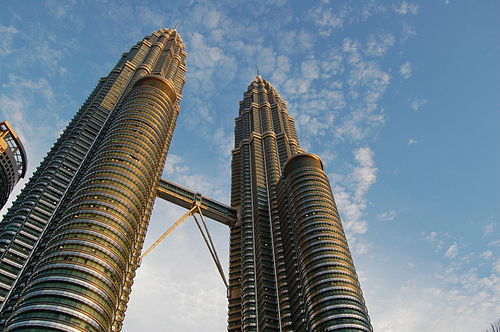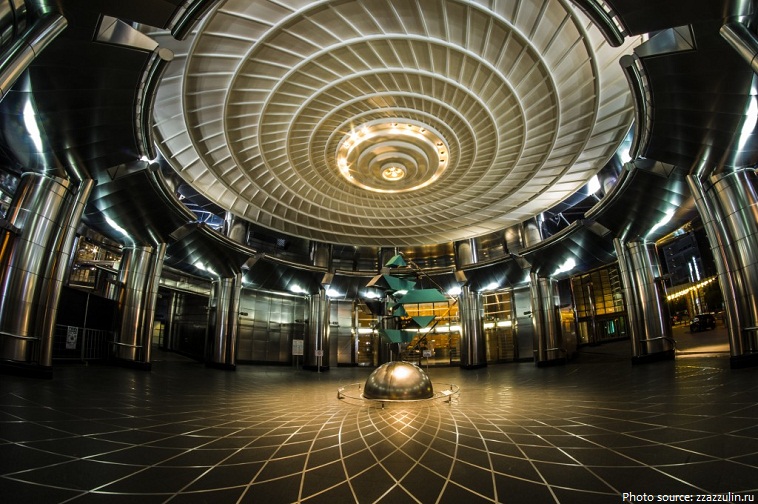The PETRONAS Twin Towers symbolises our culture and advancement on the world stage. This is shown by a blend of local art and cutting-edge innovation. The interior motifs are a reflection of local handicrafts and weaving patterns, while stainless steel and glass combine beautifully as Islamic patterns.

The design of each Tower's floor plate is based on simple Islamic geometric forms of two interlocking squares, creating a shape of eight-pointed stars. Architecturally, these forms describe important Islamic principles of "unity within unity, harmony, stability and rationality".
The towers are 'intelligent' structures, built with a system that seamlessly coordinates telecommunications, environment control, power supply, lighting, fire and smoke control, and building security.
Pinnacles
These structures house the aircraft warning lights and external maintenance building equipment.

Each pinnacle features a spire with 23 segments, and a ring ball comprised of 14 rings of varying diameters.
Exterior
Each Tower is set back five times in its ascent to maintain the vertical axis and tapering of the design. The walls of the uppermost floors are also sloped inward to taper and meet the pinnacle.

The Towers feature multi-faceted walls of 33,000 stainless steel and 55,000 glass panels. Vision Glass, specialised panels with light filtering and noise reduction properties, provide a comfortable inner environment. The glass is covered by stainless steel visors to further protect visitors from the tropical sun.
Interior
Designs and patterns of the entrance halls' foyer reflect traditional handicrafts and 'songket', or weaving. In addition, the wall panels and screens are also inspired by hardwood carvings from the East Coast of Peninsular Malaysia. The floor designs are based on intricate patterns of pandan weaving and bertam palm wall matting.
Lifts
The Towers house 29 double-decker high-speed passenger lifts, six heavy-duty service lifts and four executive lifts. The floors are based on a zoning arrangement: two sets of 6 double-decker lifts serve levels 1 to 23 and levels 1 to 37, while another set of the five double-decker lifts take passengers directly to the Sky Lobby. Here, passengers take another lift to the upper zones.

The executive lifts are the longest rise in any office building in Malaysia. It serves every floor from the basement car park to the top of the Towers in 90 seconds.
Each passenger deck can carry 26 people or 52 in total, while the executive lifts can carry an average of 10. Its speed is between 3.5m/s and 6.0 m/s, depending on the zones they are servicing.

Milestones
Jan 1992
Start of project planning
Mar 1993
Start of foundation works
Apr 1994
Construction of the superstructure
Jan 1996
Fitting out of the interiors complete with furniture
Mar 1996
Jacking of the spires of Tower 1 and Tower 2
Jan 1997
Moving in of the first batch of PETRONAS' personnel
31 Aug 1999
Official opening by YAB Dato Seri Dr Mahathir Mohamad, the 4th Prime Minister of Malaysia
Source : https://www.petronastwintowers.com.my/facts#milestones



















